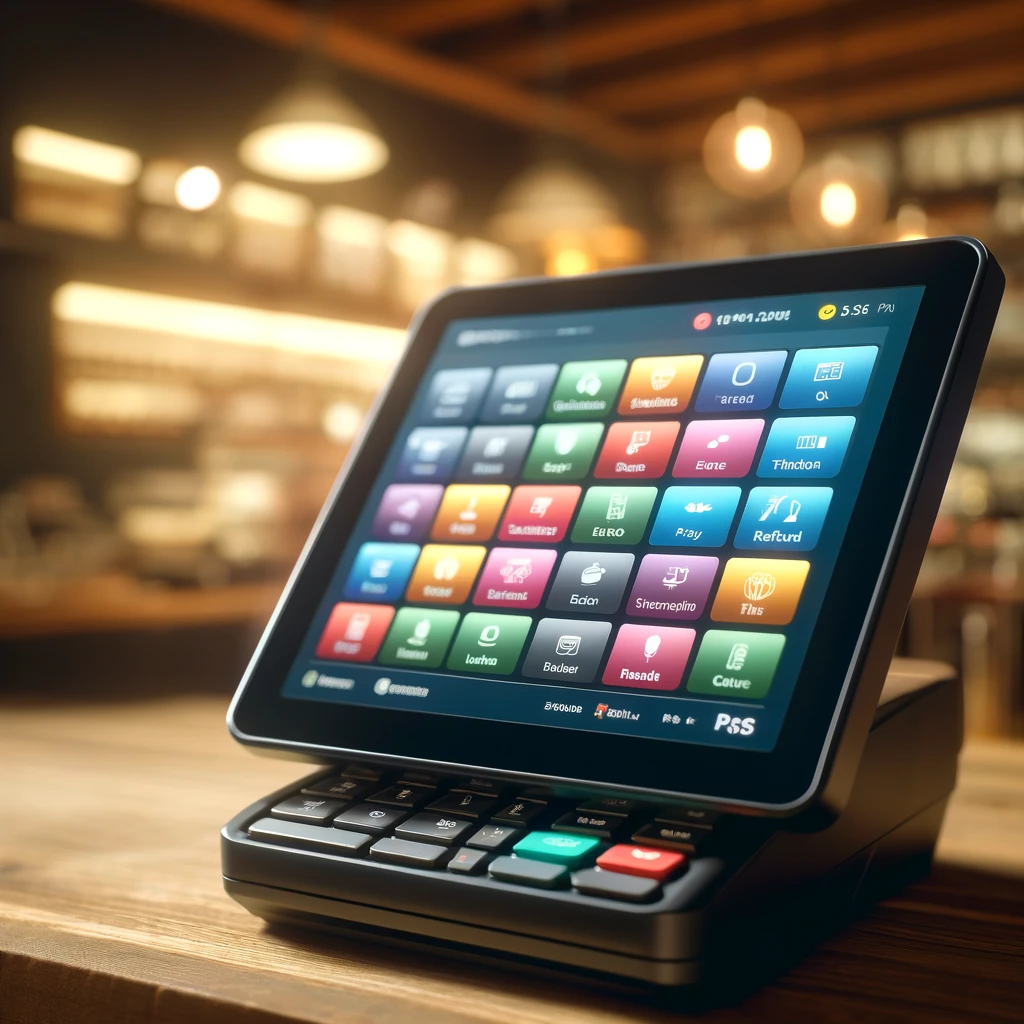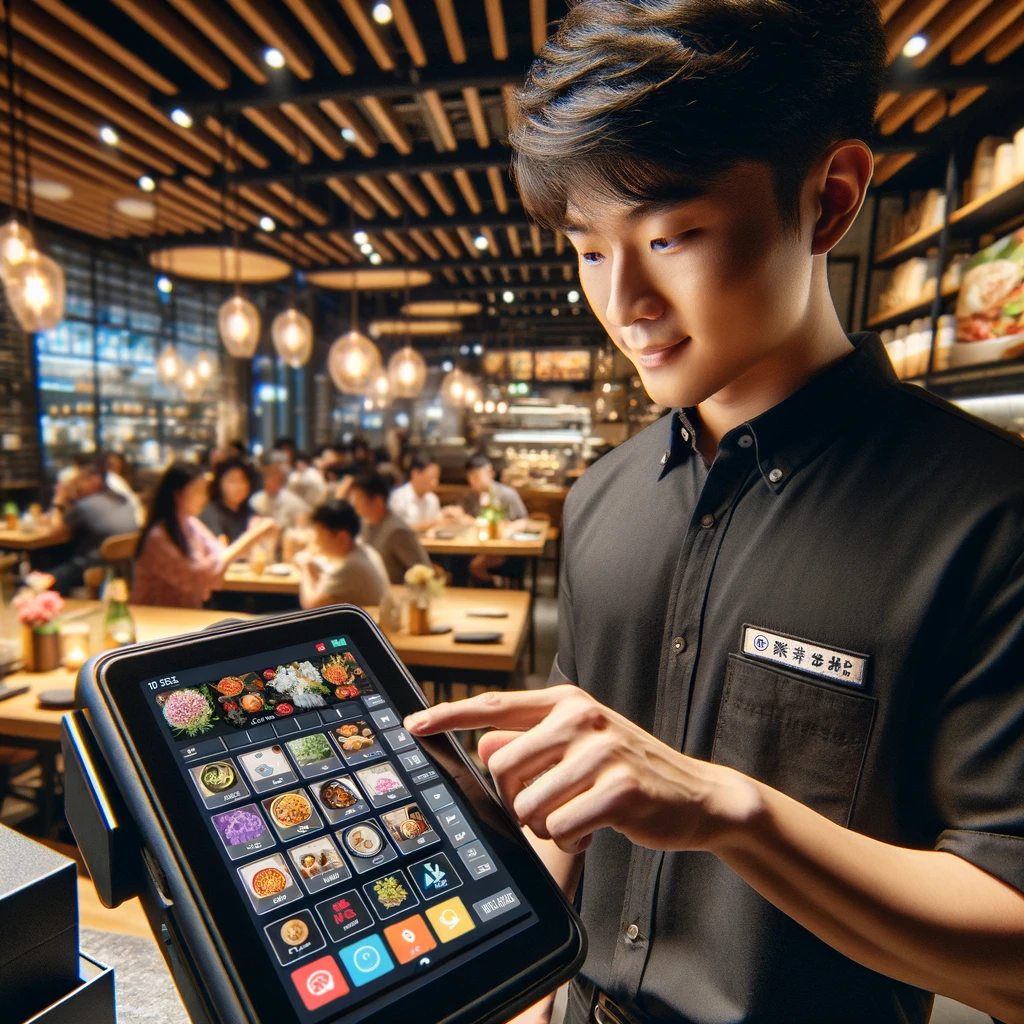Click here to visit our YouTube channel and be sure to like, subscribe, and comment to let us know what you think!
In the dynamic world of restaurants, the point-of-sale (POS) system stands as the beating heart, orchestrating the intricate dance of orders, payments, and operational efficiency. However, as businesses evolve and technological advancements accelerate, the once-reliable POS system may start to falter, hindering growth and compromising customer experiences. Recognizing when it’s time to transition to a new POS solution is crucial, but the process can be daunting, fraught with uncertainties and potential pitfalls. This comprehensive guide aims to demystify the journey of switching POS systems, empowering restaurateurs to navigate the process with confidence and precision.
The Telltale Signs: When to Consider a POS System Transition
Like a well-worn pair of shoes, a POS system that once fit perfectly may eventually become a hindrance, slowing down your stride and hampering your ability to keep pace with the ever-changing restaurant landscape. Identifying the right moment to initiate a transition is the first step in this transformative process. Here are some telltale signs that it’s time to bid farewell to your current POS system:
Complexity Reigns Supreme
If your current POS system has become a labyrinth of convoluted processes, where even the simplest tasks, such as placing orders or splitting checks, feel like navigating a maze, it’s a clear indication that a more user-friendly solution is needed. In today’s fast-paced restaurant environment, efficiency and intuitive design are paramount, and a system that hinders rather than facilitates smooth operations is a liability.
Service Slowdowns and Bottlenecks
A sluggish POS system can be a death knell for customer satisfaction, causing frustrating delays and bottlenecks that ripple through the entire dining experience. When your POS struggles to keep up with the pace of your business, it’s a surefire sign that an upgrade is necessary to maintain the level of service your patrons expect and deserve.
Remote Access Limitations
In the modern era of digital connectivity, the inability to access your POS data remotely can be a significant disadvantage. As a restaurateur, you need the flexibility to monitor operations, make informed decisions, and implement changes from anywhere, at any time. A POS system that tethers you to a physical location is akin to wearing shackles in a world that demands agility.
Contractual Constraints and Escalating Costs
If your current POS provider requires you to sign a multi-year contract, it can severely limit your ability to adapt to changing business needs. Similarly, if the costs associated with hardware, maintenance, or upgrades are becoming prohibitively expensive, it’s a clear sign that exploring more cost-effective alternatives is prudent.
Integration Limitations and Scalability Concerns
As your business grows and evolves, your POS system should be able to seamlessly integrate with third-party applications for functions such as accounting, inventory management, and employee scheduling. If your current solution lacks this flexibility or cannot scale to accommodate your expansion plans, it’s time to seek a more adaptable and future-proof option.
Security Vulnerabilities and Offline Limitations
In an era where data breaches and cyber threats are ever-present, a POS system with outdated security protocols or an inability to process transactions offline can pose significant risks to your business and your customers. Prioritizing data protection and uninterrupted service should be non-negotiable, and a system that falls short in these areas warrants immediate attention.
Lackluster Customer Support and Responsiveness
When issues arise with your POS system, prompt and effective support is paramount. If your current provider consistently fails to deliver timely and satisfactory assistance, or if their support hours are inadequate for your operational needs, it’s a clear indication that a more responsive and dedicated partner is required.
Evaluating Your Options: Factors to Consider When Switching POS Systems
Once you’ve recognized the need for a change, the next step is to carefully evaluate the available options in the market. This process requires a thorough understanding of your business’s unique requirements, as well as an appreciation for the features and capabilities that can propel your operations to new heights. Here are some key factors to consider when exploring potential POS system replacements:
Cost and Pricing Structure
While cost should never be the sole determining factor, it’s essential to understand the pricing structure of potential POS solutions. Look for transparent and flexible pricing models that align with your budgetary constraints and growth projections. Consider not only the upfront costs but also recurring fees, hardware expenses, and any potential hidden charges that may arise over time.
Feature Set and Functionality

Ease of Use and Training Requirements
The user experience should be a top priority when selecting a new POS system. Look for intuitive interfaces and user-friendly designs that minimize the learning curve for your staff. Additionally, consider the training resources and support provided by the vendor, as a smooth transition and ongoing education can significantly impact the success of your implementation.
Integration Capabilities and Ecosystem
In today’s interconnected business landscape, the ability to integrate with other essential tools and platforms is paramount. Assess the integration capabilities of potential POS systems, ensuring they can seamlessly collaborate with your existing software ecosystem or provide a robust suite of complementary solutions to streamline your operations further.
Mobility and Omnichannel Capabilities
As consumer behavior evolves, embracing omnichannel strategies and mobile-friendly solutions has become increasingly important for restaurants. Evaluate the mobile capabilities of potential POS systems, including tableside ordering, online ordering, and delivery integration, to ensure you can meet your customers’ expectations and capitalize on emerging trends.
Reporting and Analytics
Data-driven decision-making is the cornerstone of successful restaurant operations. Assess the reporting and analytics capabilities of potential POS systems, ensuring they provide comprehensive insights into sales, inventory, customer behavior, and other key metrics that can inform your strategic planning and operational optimization.
Customer Support and Vendor Reputation
When evaluating potential POS vendors, consider their reputation for customer support and responsiveness. A reliable and dedicated support team can make all the difference in resolving issues promptly and minimizing downtime, ensuring your business operates smoothly even in the face of challenges.
The Transition Process: A Step-by-Step Guide
With a clear understanding of your requirements and a shortlist of potential POS solutions, it’s time to embark on the transition process itself. While the specifics may vary depending on your current system and the solution you’ve chosen, here’s a general step-by-step guide to help you navigate the journey:
Step 1: Data Migration and Preparation
Before making the switch, it’s crucial to ensure that your existing data is properly migrated to the new system. This may include sales records, customer information, inventory levels, and employee records. Work closely with your new POS provider to understand their data migration process and ensure that your valuable information is accurately transferred, minimizing the risk of data loss or corruption.
Step 2: Hardware Assessment and Acquisition
Depending on the requirements of your new POS system, you may need to acquire new hardware components, such as tablets, terminals, or peripherals. Consult with your provider to understand their hardware recommendations and ensure compatibility with your existing infrastructure. Additionally, consider any necessary networking upgrades or modifications to support the new system seamlessly.
Step 3: Staff Training and Onboarding
A successful POS transition relies heavily on the preparedness and buy-in of your staff. Collaborate with your new POS provider to develop a comprehensive training plan that addresses the system’s features, workflows, and best practices. Consider a phased rollout approach, allowing your team to gradually adapt to the new system while minimizing disruptions to your daily operations.
Step 4: Parallel Testing and Validation
Before fully committing to the new POS system, it’s advisable to conduct parallel testing and validation. During this phase, you’ll run both the old and new systems concurrently, allowing you to identify and address any potential issues, discrepancies, or compatibility challenges before fully decommissioning the old system.
Step 5: Go-Live and Transition Support
Once you’ve completed the necessary testing and validation, it’s time to go live with your new POS system. This phase may involve a complete cutover or a staged rollout, depending on the size and complexity of your operation. Ensure that your new POS provider offers dedicated transition support, including on-site assistance and remote troubleshooting, to minimize disruptions and ensure a smooth transition.
Step 6: Continuous Optimization and Feedback

Overcoming Common Challenges and Pitfalls
While the process of switching POS systems can be transformative for your restaurant, it’s not without its challenges and potential pitfalls. Being aware of these common obstacles can help you anticipate and mitigate them, ensuring a smoother transition and minimizing disruptions to your operations.
Resistance to Change
Change can be unsettling, and introducing a new POS system may initially be met with resistance from your staff, who are accustomed to the familiarity of the old system. Effective communication, comprehensive training, and a clear understanding of the benefits of the new solution can help overcome this resistance and foster a culture of adaptability and continuous improvement.
Data Integrity and Migration Issues
Ensuring the accuracy and completeness of your data during the migration process is crucial. Any errors or inconsistencies can have far-reaching consequences, from inaccurate inventory levels to lost customer information. Work closely with your new POS provider to establish robust data validation protocols and contingency plans to address any issues that may arise.
Integration Challenges
Integrating your new POS system with existing software and hardware components can present unexpected challenges. Thoroughly assess compatibility and integration requirements upfront, and collaborate with your IT team or third-party experts to ensure a seamless integration process.
Training and Adoption Hurdles
Even with comprehensive training programs in place, some staff members may struggle to adopt the new POS system fully. Identify potential roadblocks early on, provide ongoing support and resources, and consider implementing incentives or recognition programs to encourage adoption and proficiency.
Downtime and Service Disruptions
While every effort should be made to minimize disruptions, some level of downtime or service interruptions may be unavoidable during the transition process. Proper planning, communication, and contingency measures can help mitigate the impact on your operations and customer experiences.
Cost Overruns and Budget Constraints
Unforeseen expenses or hidden costs can quickly derail even the most meticulously planned POS transition. Conduct thorough due diligence, negotiate transparent pricing agreements, and maintain a contingency budget to account for potential overruns or additional requirements.
By anticipating and addressing these common challenges proactively, you can navigate the transition process with greater confidence and minimize the impact on your restaurant’s operations and customer experiences.
The Benefits of a Successful POS System Transition
While the journey of switching POS systems may seem daunting, the rewards and benefits of a successful transition can be transformative for your restaurant. Here are some of the key advantages you can expect to experience:
Improved Operational Efficiency
A modern, user-friendly POS system can streamline your operations, reducing bottlenecks and minimizing errors. With intuitive interfaces and seamless integration, your staff can focus on delivering exceptional service, rather than wrestling with cumbersome processes.
Enhanced Customer Experiences
From faster order processing to seamless omnichannel ordering and payment options, a robust POS system can significantly enhance the customer experience. By embracing cutting-edge technology, you demonstrate your commitment to providing a seamless and enjoyable dining experience, fostering loyalty and repeat business.
 Scalability and Future-Proofing
Scalability and Future-Proofing
As your restaurant grows and evolves, a flexible and scalable POS system can adapt to your changing needs. Whether you’re expanding to multiple locations or exploring new revenue streams, a future-proof solution can support your ambitions without becoming a bottleneck.
Data-Driven Decision-Making
With comprehensive reporting and analytics capabilities, a modern POS system can provide invaluable insights into your operations, customer behavior, and financial performance. Armed with this data, you can make informed decisions, identify areas for optimization, and stay ahead of emerging trends.
Cost Savings and Increased Profitability
While the initial investment in a new POS system may seem significant, the long-term cost savings and increased profitability can more than justify the expense. By streamlining operations, reducing errors, and capitalizing on new revenue opportunities, a modern POS solution can positively impact your bottom line.
Competitive Advantage
In the highly competitive restaurant industry, embracing cutting-edge technology can provide a distinct competitive advantage. By offering a seamless, technology-driven dining experience, you can differentiate your establishment from competitors and attract a loyal customer base that values innovation and convenience.
Ultimately, a successful POS system transition is not just about adopting new technology; it’s about transforming your restaurant into a more efficient, customer-centric, and future-ready enterprise, poised to thrive in an ever-evolving industry.
Conclusion
Switching your restaurant’s POS system is a journey that requires careful planning, strategic decision-making, and a willingness to embrace change. By recognizing the telltale signs that it’s time for a transition, evaluating your options thoroughly, and navigating the transition process with a proactive and collaborative approach, you can unlock the full potential of a modern POS solution.
Remember, the challenges and pitfalls encountered along the way are not insurmountable obstacles but rather opportunities to refine your processes, strengthen your team’s resilience, and ultimately emerge as a more adaptable and future-ready establishment.
As you embark on this transformative journey, keep an open mind, embrace innovation, and never lose sight of the ultimate goal: delivering exceptional dining experiences that keep your customers coming back for more. With the right mindset, the right partner, and a commitment to continuous improvement, your restaurant can thrive in the ever-changing landscape of the hospitality industry.


 Scalability and Future-Proofing
Scalability and Future-Proofing